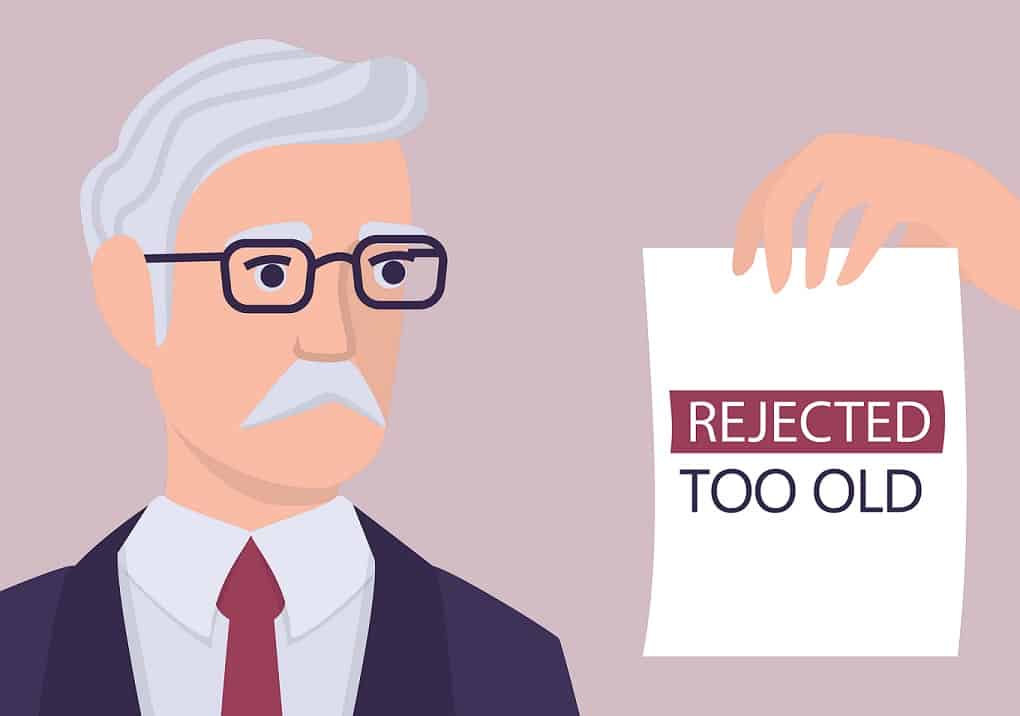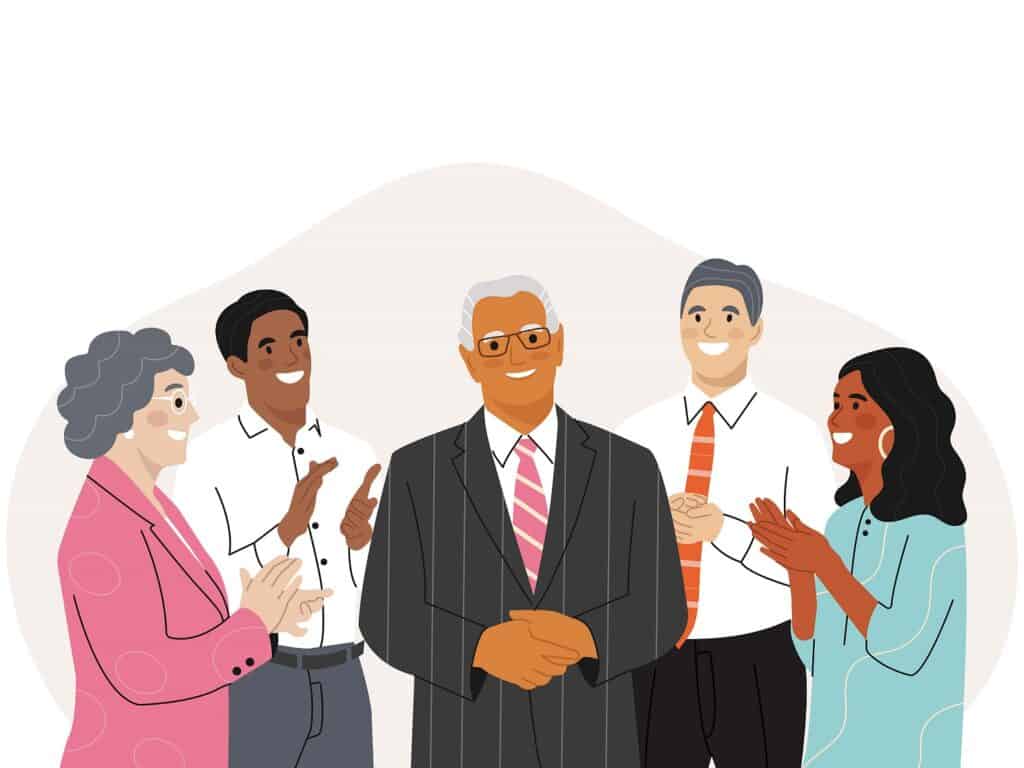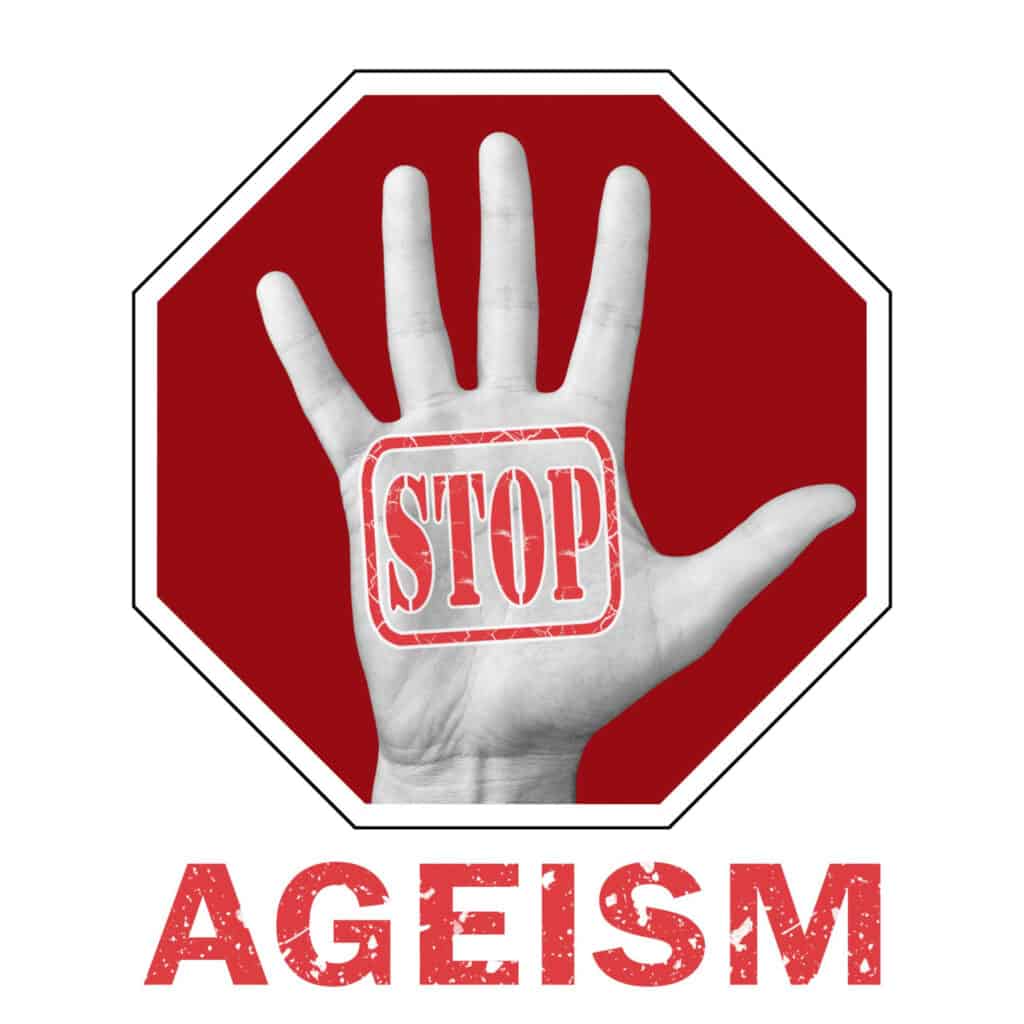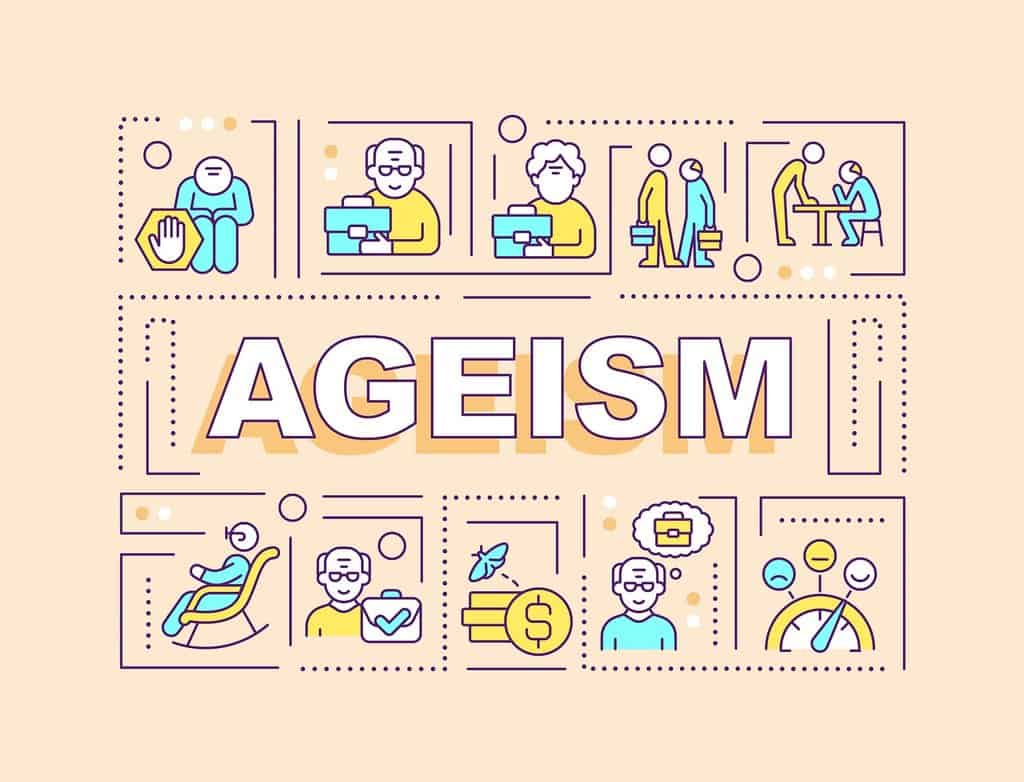At age 38, I re-entered the school benches. This time for a bachelor’s degree. That first day, opening the door to the classroom, my hands felt a bit sweaty; while I looked forward to meeting like-minded people, I was nervous as hell about being so old.
Imagine my surprise meeting André, a grey-haired 56-year-old guy pursuing his third bachelor’s degree. All I could think was, “Why would he, at his age, go through all this trouble?” In my uneducated eyes, he was practically retired.
I now know that this was a perfect example of personal ageism. What’s more, I’m now approaching the same age and studying health psychology at university this term. Let that sink in for a minute…
Relevance in today’s world
From this example, you might be under the impression that ageism is something that only senior members of our society are subject to, but you’d be wrong. Younger people are just as likely to be victims of ageism as older adults, and usually, it’s not even deliberate.
With today’s ageing population and tight labour market, it might be a good time to raise awareness of ageism bias and ban it from your organisation.
4 most common types of ageism
So, let’s start with understanding the broad categories of ageism.
According to Dr. Robert Butler, President and CEO of the International Longevity Center, we can identify four types of ageism. These are:
✅ Personal Ageism
✅ Institutional Ageism
✅ Intentional (Explicit) Ageism
✅ Unintentional (Implicit) Ageism
Ready to dive deeper into these categories? Then, let’s go!

Personal ageism
Personal ageism refers to individual biases and prejudices against people of specific age groups. These beliefs are influenced by what we learn as children. Social media messages and television characters also play their part.
Unfortunately, these personal attitudes can unintentionally impact hiring, promotion or team collaboration decisions.
Impact on company culture
As we’re not always aware of our baggage, it can have myriad effects on corporate culture.
It’s easy to see how allowing personal beliefs to influence performance reviews and job assignments will not improve morale and engagement.
Similarly, misunderstandings between colleagues can lead to conflict, creating an environment of mistrust and resentment.
Suffice it to say that, if not addressed, this can eventually lead to a toxic work environment where age stereotypes prevail, hindering communication, teamwork and innovation.
Practical solutions for management or human resources departments
When these issues arise, the HR department and its impressive toolkit are the first line of defence.
Implementing awareness programmes and training can help employees recognise personal biases and foster a more inclusive workplace.
Don’t underestimate the power of education – focus on self-awareness, reflection, empathy, and respect! Educate your workforce on the strengths and contributions that different age groups can bring to the table.
Institutional ageism
Institutional ageism has to do with the official side of the organisation. We’re talking about policies and practices within the organisation that are discriminatory based on age.
It is broader than personal ageism. It often involves structural and systemic barriers that inadvertently favour or disadvantage certain age groups.
Impact on job opportunities, careers, and employer reputation
You’re in big trouble if ageism has worked its way into policies, guidelines and practices.
It can result in unequal access to opportunities, training or benefits for your workforce, leading to dissatisfaction and potential legal problems, which is bad enough. Virtually every country in the Western world has implemented age discrimination laws and policies. The European ESG objectives have given this topic even more prominence.
Moreover, from a business perspective, it’s a pretty expensive prejudice to allow. It’s disastrous for your staff retention and development, and high staff turnover is immeasurably damaging your reputation as an employer.
Imagine: as a sought-after employee, you can choose between an employer with an inclusive, diverse and open culture and, on the other hand, one with institutional ageism that creates age barriers to growth and career development. Which would you choose?
Strategies to challenge and reduce institutional ageism
Suspecting institutional ageism? If so, the first step is to audit your company’s policies and practices. This will reveal any hidden biases and provide a solid basis for the following steps:
🎯 Implement clear anti-discrimination policies that address ageism and promote an age-diverse workforce.
🎯 Provide training and education to break down stereotypes and promote understanding to change the culture.
🎯 Finally, consider a reporting and feedback facility if not already in place. This will enable early identification and resolution of age-related issues. It also demonstrates your organisation’s intent to address these issues.
Intentional (explicit) ageism
Think of it as the black sheep of the bunch. While the other three forms of ageism have an element of unconscious bias, this does not.
It involves deliberate actions and comments that stereotype or demean someone because of their age; nothing is pretty about that.
It should set off all the alarm bells you can think of if you find this behaviour in your organisation today.
The dangers of stereotypes and the harm it can cause
Intentional ageism refers to deliberate actions taken to discriminate against someone because of their age. This can be explicit preferences in job advertisements, unfair evaluations or targeted harassment.
For victims, intentional ageism can lead to feelings of isolation, depression, and loss of dignity.
As a result, this type of ageism can lead to a hostile and toxic work culture, low morale, potential legal implications, high staff turnover and unprecedented damage to your reputation as an employer.
Who needs that kind of trouble?
Steps to take action
These are serious excesses, and the consequences are grave. And that is why I cannot stress it enough: Educate your workforce! Implement e-learning courses, use your company intranet and lead by example.
Ensure a robust anti-discrimination policy, implement clear reporting procedures and take a firm organisational stance against ageism. Did I mention a “Speak Up” line?
Unintentional (implicit) ageism
Unintentional ageism is more subtle, often manifesting as a hidden bias we may not even be aware of. It’s a lot like personal ageism but more work-related.
It can take the form of ideas, attitudes, rules or practices that are carried out without people being aware that it’s an age-based bias.
Detecting hidden bias
The word ‘unintentional’ says it all. Because these biases are unintentional, uncovering them takes a lot of self-awareness and reflection. And don’t kid yourself that you’re immune; it happens to the best of us!
Need an example? Think of patronising behaviour, over-the-hill cards, and ‘senior moments’. Or as a manager, when you inadvertently treat older and younger employees differently. Depending on their biases, they may prefer ideas from younger or more senior employees based on perceived experience or flexibility.
And is the ‘okay boomer’ still a thing in the office? This is a pretty telltale sign, if there is one.
Promoting awareness
As with other forms of ageism, awareness-raising and training will do the trick.
You are halfway to a healthy working environment by making unintentional ageism visible.

Conclusion

Ageism is a widespread pattern of discrimination that targets specific age groups. It mainly affects older people, but it can also affect younger people.
This discrimination is rooted in preconceived notions, such as the stereotype that older people lack intelligence or are unwilling to cooperate or the belief that the views and contributions of young adults should be dismissed or undervalued.
As a human resources professional, you must know the nuanced differences between these four types of ageism. Think of yourself as a gatekeeper. You can create an environment compliant with the law and promote a culture of respect, inclusion, diversity and collaboration.
It is the way to a more prosperous and cohesive workplace where age diversity is celebrated as an asset, not a divisive issue.




